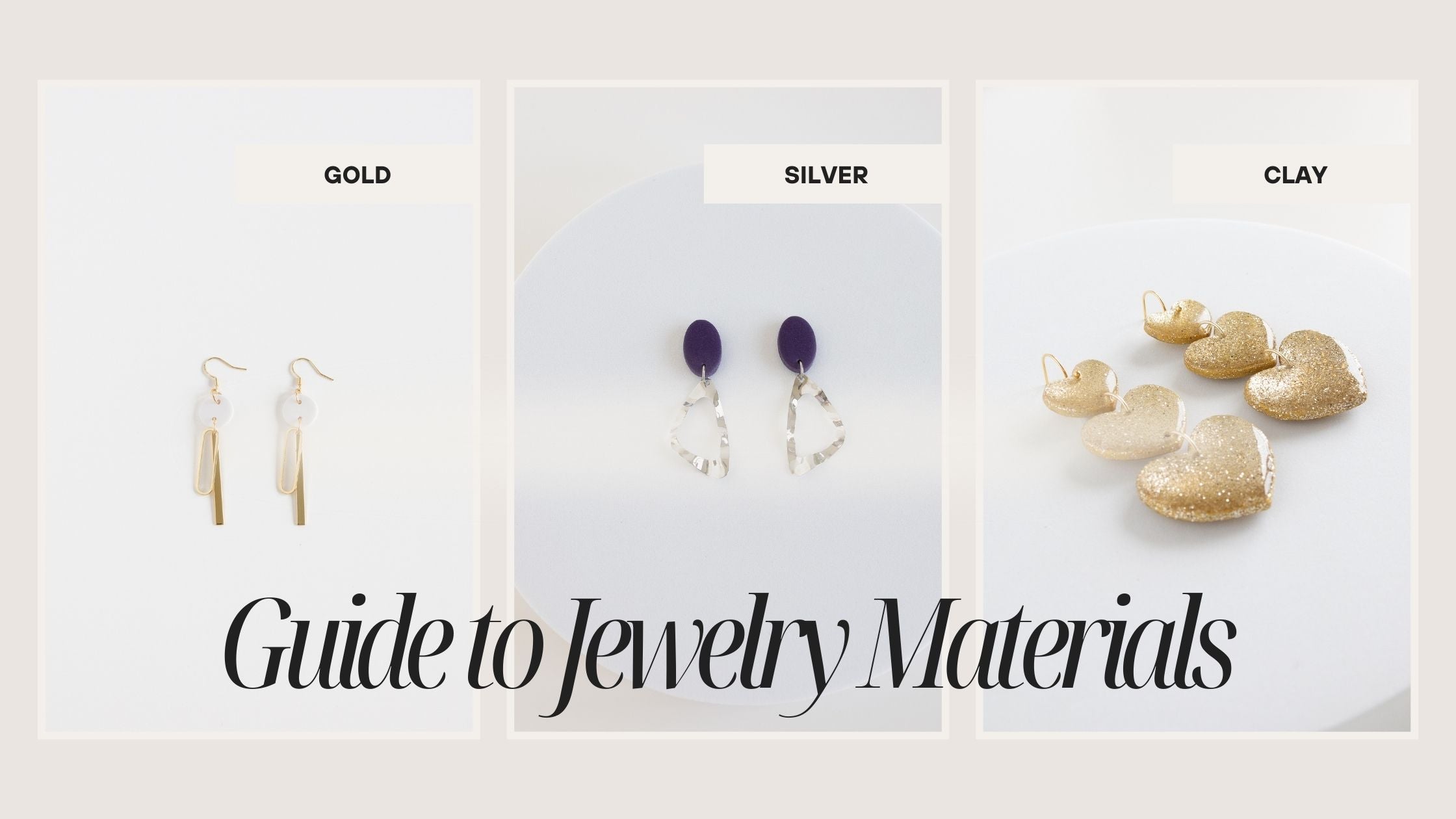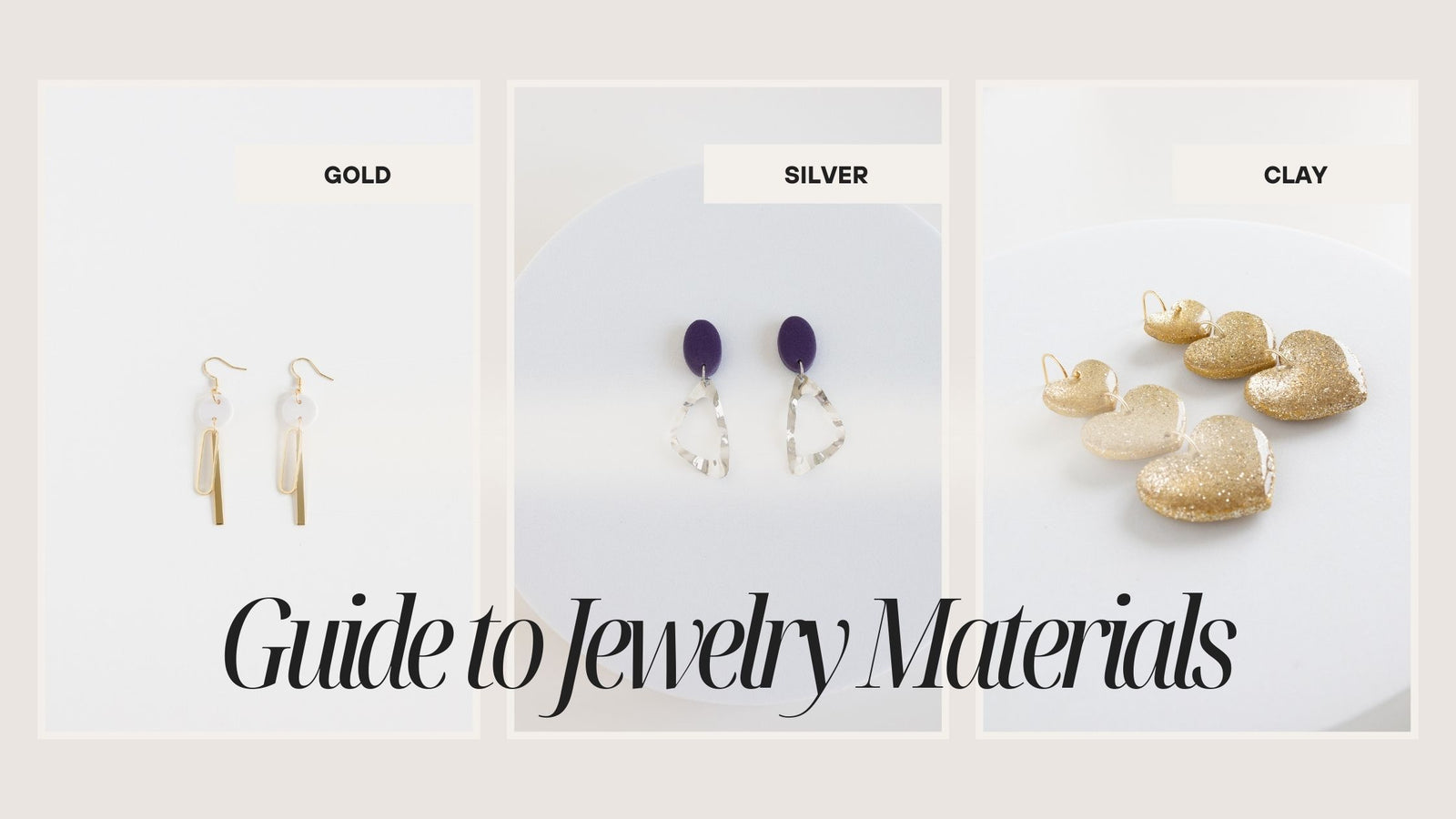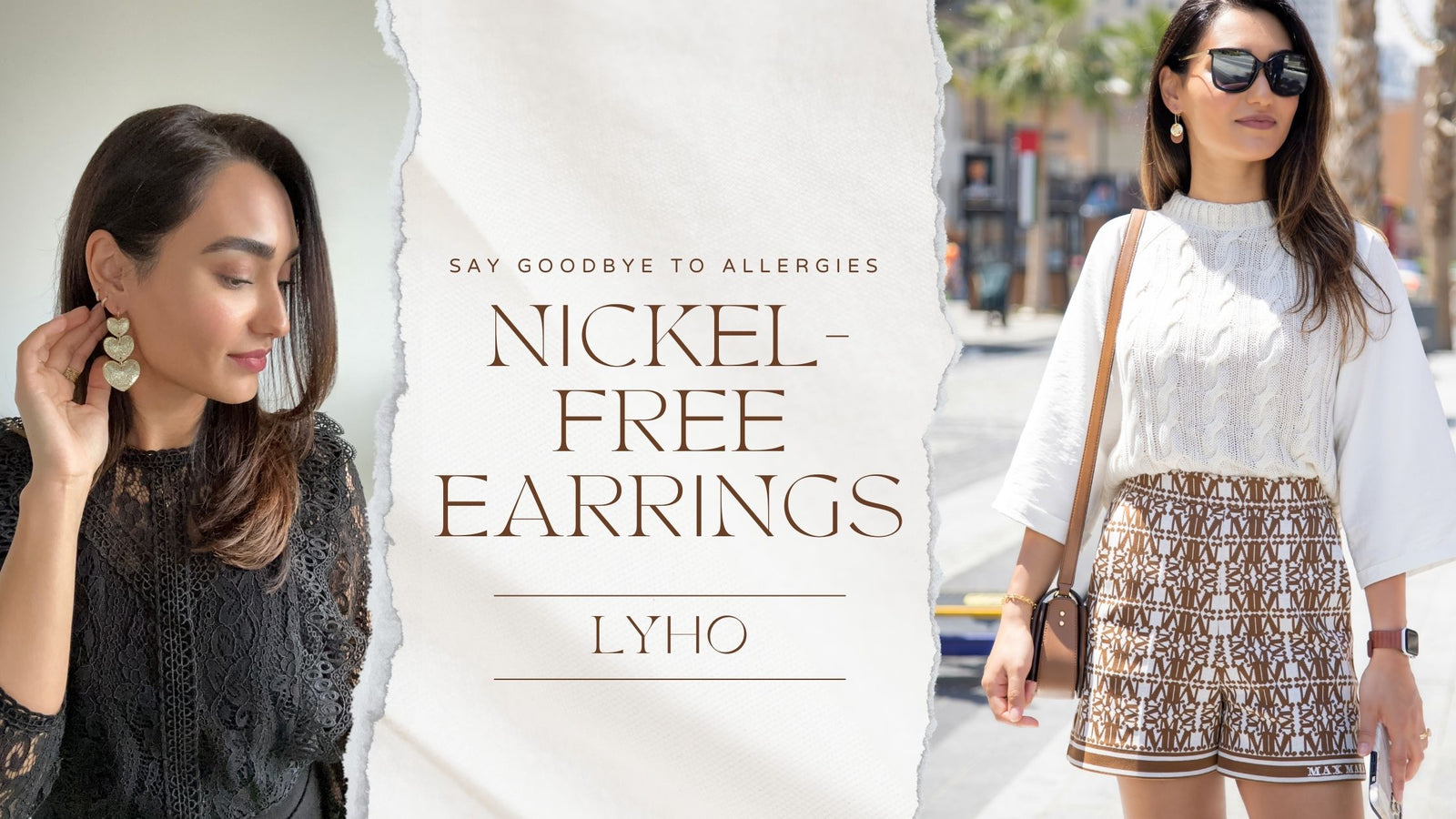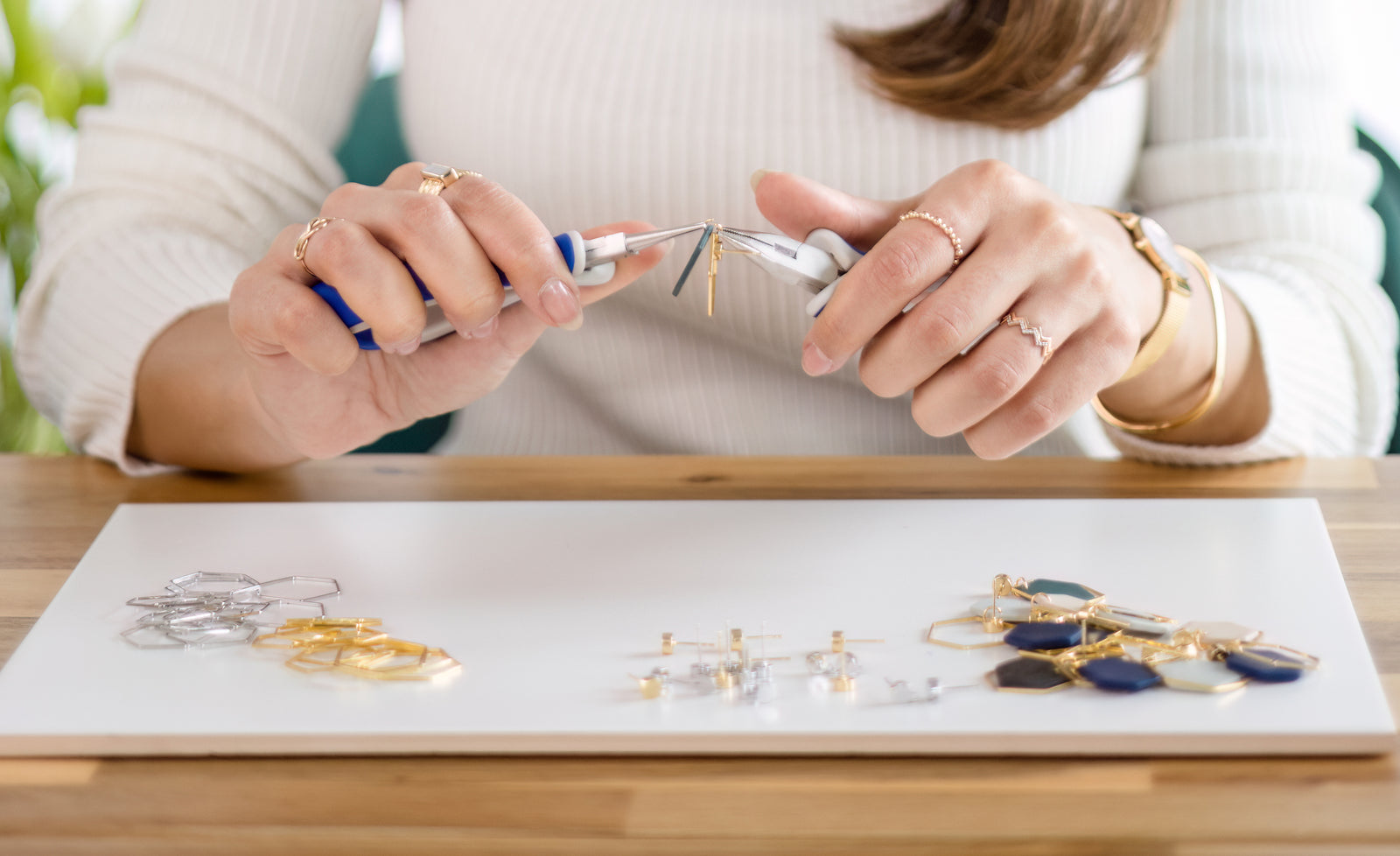Introduction
Importance of understanding jewelry materials
Jewelry materials play a crucial role in the durability, appearance, and value of each piece. Knowing the characteristics of different materials can help you make informed decisions when purchasing or caring for your jewelry.
Overview of various jewelry materials
From precious metals like gold and silver to alternative materials such as polymer clay, there's a wide range of options to suit every style and preference. Each material comes with its own benefits and considerations.
How LYHO Jewelry empowers women through stylish and unique jewelry pieces
LYHO Jewelry combines empowering designs with ethical materials, allowing women to express their boldness and self-love while supporting a meaningful cause. With handmade pieces and a focus on craftsmanship, LYHO Jewelry offers stylish and unique options for every individual.
Precious Metals
Understanding the characteristics and qualities of precious metals used in jewelry is crucial when choosing the perfect piece. In this section, we will delve into the world of gold, silver, and platinum, and explore how LYHO Jewelry incorporates these materials into their empowering and stylish collections.
Gold
Gold has been a sought-after material for jewelry for centuries due to its beautiful luster, resistance to tarnish, and malleability. This precious metal comes in various types, including yellow, white, and rose gold. Yellow gold is the most traditional form and is made by mixing pure gold with metals such as copper and zinc. White gold is created by alloying gold with white metals like palladium or silver and is usually plated with rhodium for a bright finish. Rose gold, with its romantic hue, is achieved by adding a higher percentage of copper to the gold alloy.
Gold Vermeil refers to a high-quality form of gold plating where a thick layer of gold (usually 14k or higher) is plated over sterling silver. LYHO Jewelry's Gold & Silver collection features unique pieces with gold or silver-plated accents that are allergy-friendly and come with a one-year color-safety guarantee. This collection showcases the versatility of gold and its ability to elevate any jewelry design.
Silver
Silver is another popular choice for jewelry due to its affordability, durability, and timeless appeal. The most common type of silver used in jewelry is 925 Sterling Silver, which consists of 92.5% pure silver and 7.5% other metals (usually copper). This alloy is more robust and less prone to tarnishing compared to pure silver.
LYHO Jewelry offers a range of handmade silver earrings that exude charm, strength, and confidence. These pieces not only reflect the brand's commitment to empowering women but also showcase the beauty and versatility of silver as a jewelry material.
Platinum
Platinum is a rare and valuable precious metal known for its strength, durability, and resistance to tarnish. Its naturally white, lustrous appearance makes it an ideal choice for contemporary jewelry designs, especially for those seeking a hypoallergenic option. Platinum's unique characteristics ensure that your jewelry will retain its beauty and value for years to come.
Non-Precious Metals
While precious metals like gold and silver are popular choices for jewelry, non-precious metals also offer a variety of advantages. Let's dive into the characteristics and qualities of some popular non-precious metals used in jewelry-making, such as stainless steel, copper and zinc alloy, and brass and bronze.
Stainless Steel
Stainless steel has become increasingly popular in jewelry due to its durability, strength, and affordability. This metal is resistant to tarnishing, corrosion, and scratching, making it an excellent choice for those with an active lifestyle. It's also hypoallergenic, making it suitable for individuals with sensitive skin or metal allergies. With its sleek and modern appearance, stainless steel jewelry pieces offer a bold and empowering look that complements any outfit.
Copper & Zinc Alloy
Copper and zinc alloy, often referred to as brass, is another popular non-precious metal used in jewelry. This versatile metal boasts a warm, golden tone that resembles gold, yet at a more affordable price point. Copper and zinc alloy jewelry is known for its durability and resistance to corrosion. However, it may cause skin discoloration or allergic reactions for some individuals, so it's essential to be aware of your skin's sensitivity when choosing this material.
Brass and Bronze
Brass and bronze are two more non-precious metals frequently used in jewelry-making. Brass, a combination of copper and zinc, offers a bright, yellow-gold appearance and is often used as a cost-effective alternative to gold. Bronze, an alloy of copper and tin, has a warm, reddish-brown hue and is valued for its strength and resistance to tarnishing. Both metals provide a unique, vintage aesthetic and can be easily molded into intricate designs, making them popular choices for artisan jewelry pieces that empower and inspire.
In conclusion, non-precious metals like stainless steel, copper and zinc alloy, and brass and bronze offer various advantages in terms of durability, affordability, and unique appearances. Understanding the characteristics and qualities of these metals can help you make an informed decision when choosing jewelry pieces that not only express your personal style but also promote self-love and empowerment.
Gemstones
Gemstones are a crucial aspect of jewelry design, offering a dazzling array of colors and properties. Understanding the difference between natural and synthetic gemstones can help you make more informed decisions about your jewelry choices.
Natural Gemstones
Natural gemstones are formed by the Earth over millions of years and often hold unique qualities that make them highly sought-after. These gemstones are not only valuable for their beauty but also for their rarity and distinct characteristics.
Some popular natural gemstones include diamonds, sapphires, rubies, emeralds, and amethysts. Each gemstone exhibits its own set of characteristics, such as color, hardness, and refractive index, which contribute to its overall appeal and value. These gemstones can be used in various jewelry pieces to create stunning and timeless designs that empower and inspire women to be bold and confident.
Synthetic Gemstones
Synthetic gemstones, on the other hand, are man-made alternatives that can mimic the appearance and properties of natural gemstones. These gemstones offer a more affordable option for those who desire the beauty of gemstones but may not have the budget for natural ones.
There are two main types of synthetic gemstones: lab-created and simulated. Lab-created gemstones are grown in controlled environments and have the same chemical composition as natural gemstones. Simulated gemstones, such as cubic zirconia and moissanite, are made from different materials but are designed to resemble natural gemstones. Both lab-created and simulated gemstones can be used in jewelry designs to create beautiful and empowering pieces that cater to a variety of tastes and budgets.
Alternative Materials
In addition to traditional metals and gemstones, various alternative materials are gaining popularity in the world of jewelry. These materials offer unique characteristics and qualities that make them ideal for creating bold and stylish pieces. Let's explore some of these alternative materials and how they're used in LYHO Jewelry's empowering collections.
Polymer Clay
Polymer clay is a versatile and lightweight material that can be molded into intricate shapes and designs. Its flexibility allows for endless creative possibilities, making it an ideal choice for handcrafted jewelry. When baked, polymer clay becomes durable and retains its vibrant colors, ensuring long-lasting wear.
LYHO Jewelry's Startale and Darien earrings are excellent examples of how polymer clay can be used to create unique and empowering pieces. These handmade earrings are lightweight and comfortable to wear, making them perfect for women who want to showcase their bold style. Additionally, 5% of the proceeds from each purchase of Startale and Darien earrings are donated to organizations supporting women victims of domestic violence, reinforcing LYHO Jewelry's mission to empower and support women.
Glass and Crystal
Glass and crystal are often used in jewelry for their ability to reflect and refract light, creating eye-catching sparkle and shine. While glass is more affordable and comes in a wide range of colors and shapes, crystal is prized for its superior brilliance and clarity. Both materials can be used to create stunning jewelry pieces that catch the eye and make a statement.
Wood and Bone
Wood and bone are natural materials that offer a unique and earthy aesthetic to jewelry designs. Wood can be carved, stained, or painted to create a variety of styles, while bone can be polished, dyed, or engraved for added detail. These materials are perfect for those who appreciate a more organic and natural look in their jewelry.
Leather and Fabric
1. Leather and fabric are popular choices for creating jewelry with a soft and comfortable feel. Leather can be braided, wrapped, or stitched into various designs, while fabric can be woven, knotted, or embroidered to create eye-catching patterns. Both materials are ideal for creating versatile and stylish jewelry that can be worn every day and for various occasions.
In conclusion, understanding and exploring alternative jewelry materials can help you find unique and empowering pieces that match your personal style and preferences. Don't be afraid to experiment with these materials and discover new ways to express yourself through your jewelry choices.
Ethical Considerations
When choosing jewelry, it's essential to consider the ethical implications of the materials and production methods. This not only ensures that your jewelry is made in a responsible and sustainable manner, but it also aligns with the values of empowerment, boldness, and support that LYHO Jewelry embodies.
Conflict-free materials
Conflict-free materials are sourced from mines and suppliers that adhere to strict labor and environmental standards. This means that the materials used in your jewelry do not contribute to human rights abuses, conflict, or environmental degradation. By choosing jewelry made from conflict-free materials, you can wear your pieces with pride, knowing that they are ethically sound.
Fair labor practices
Another important aspect of ethical jewelry is the labor practices employed during production. Fair labor practices ensure that workers are paid fair wages, have safe working conditions, and are not subjected to exploitation. When you choose jewelry from a company that prioritizes fair labor practices, you are supporting a business that values its workers and is committed to creating a better world for everyone.
LYHO Jewelry's commitment to ethical materials and supporting women victims of domestic violence
LYHO Jewelry is dedicated to empowering women and promoting self-love by using ethical materials and supporting meaningful causes. Their commitment is demonstrated through their use of conflict-free materials and fair labor practices in the creation of their unique and stylish jewelry pieces. Additionally, 5% of the proceeds from each purchase of Startale and Darien earrings are donated to organizations supporting women victims of domestic violence. By choosing LYHO Jewelry, you can be confident that you are making an ethical choice that aligns with your values and contributes to a brighter future for all.
Jewelry Care and Maintenance
Taking proper care of your jewelry is essential to maintain its beauty and longevity. In this section, we will discuss general cleaning and storage tips, specific care instructions for different materials, and LYHO Jewelry's care instructions for their earrings.
Cleaning and Storage Tips
Regardless of the jewelry materials, it's important to keep your pieces clean and stored safely. Here are some general tips for cleaning and storage:
- Use a soft, lint-free cloth to gently wipe your jewelry after each wear to remove any dirt or oils.
- Avoid exposing your jewelry to harsh chemicals, such as perfumes or cleaning products.
- Store your jewelry in a cool, dry place, away from direct sunlight or extreme temperatures.
- Separate your pieces in individual compartments or pouches to prevent scratches and tangling.
Specific Care Instructions for Different Materials
Different jewelry materials require specific care to keep them in optimal condition. Here are some guidelines for various materials:
- Precious metals: Use a mild soap and warm water solution to clean gold, silver, and platinum. Gently scrub with a soft-bristle brush, and rinse thoroughly. Dry with a soft cloth.
- Non-precious metals: Wipe down stainless steel, copper, brass, and bronze with a soft, damp cloth. Avoid using abrasive cleaning products.
- Gemstones: Clean natural and synthetic gemstones with a soft cloth and warm water. Avoid using ultrasonic cleaners or harsh chemicals, as they can damage the stones.
- Alternative materials: Gently wipe down polymer clay, glass, wood, and leather with a slightly damp cloth. Keep fabric jewelry away from water and moisture.
LYHO Jewelry's Care Instructions for Earrings
As a brand that empowers women through unique and stylish jewelry pieces, LYHO Jewelry provides specific care instructions for their earrings to ensure longevity and maintain their charm:
- Clean your earrings with wet wipes or makeup remover.
- Avoid bending the earrings or placing them in a bag with heavy objects.
- Do not swim or shower while wearing your earrings.
By following these care and maintenance tips, you can keep your jewelry looking stunning and preserve its quality for years to come. Remember, proper care is a crucial aspect of self-love and appreciation for the beautiful pieces you wear.
Choosing the Right Jewelry Material for You
When selecting the perfect piece of jewelry, it's important to consider not only the style and design but also the materials used. In this section, we'll explore how to assess your personal style and preferences, consider allergies and sensitivities, and introduce LYHO Jewelry's innovative Magic Clips for those without pierced ears.
Assessing Your Personal Style and Preferences
Before diving into the world of jewelry materials, it's crucial to have a clear understanding of your personal style and preferences. Are you drawn to minimalist designs or bold statement pieces? Do you prefer gold, silver, or alternative materials like polymer clay? Consider your current jewelry collection and identify the materials and styles that you gravitate towards the most. This will help you make more informed decisions when shopping for new pieces and ensure that your jewelry collection remains cohesive and true to your style.
Considering Allergies and Sensitivities
Another important aspect to take into account when choosing jewelry materials is your skin's sensitivity. Some individuals may experience allergic reactions or skin irritation when wearing certain metals, such as nickel or copper. If you have sensitive skin or known allergies, opt for hypoallergenic materials like gold, sterling silver, or stainless steel. LYHO Jewelry's Gold & Silver collection is an excellent example of allergy-friendly options, featuring unique pieces with gold or silver-plated accents.
LYHO Jewelry's Magic Clips for Individuals Without Pierced Ears
For those who don't have pierced ears but still want to enjoy the beauty of earrings, LYHO Jewelry offers a fantastic solution: Magic Clips. These innovative clips transform any pair of earrings into clip-ons, allowing you to wear your favorite pieces without the need for piercings. This is a perfect example of how LYHO Jewelry empowers women to express their personal style and feel confident in their choices, regardless of their individual circumstances.
In conclusion, understanding your personal style and preferences, being mindful of allergies and sensitivities, and exploring innovative solutions like LYHO Jewelry's Magic Clips will help you choose the right jewelry materials for you. With this knowledge, you can confidently build a beautiful and unique jewelry collection that reflects your personality and supports your journey of self-love and empowerment.
Conclusion
In this ultimate guide to jewelry materials, we highlighted the importance of understanding various materials used in jewelry making. By being informed about the characteristics and qualities of different materials, you can make better choices for your personal style, preferences, and sensitivities.
We encourage you to explore LYHO Jewelry's unique and stylish collections, where you'll find pieces that reflect their empowering, bold, and supportive brand. From gold and silver to alternative materials like polymer clay, there is something for everyone.
As you continue to explore the world of jewelry, remember to visit the LYHO Jewelry website and check out their various product collections . Let your jewelry choices reflect your personality and values, and don't be afraid to experiment with new materials and styles. Embrace your boldness, practice self-love, and support one another through your jewelry choices.
Discover More Treasures
Now that you've learned about various jewelry materials and their characteristics, you're ready to explore and choose the perfect pieces for you. Remember, LYHO Jewelry offers a variety of collections, including silver, gold, studs, minimalist, and bold styles, all made with ethical materials and empowering women. Don't forget to check out our unique handmade clay earrings like the "Startale" and Darien earrings, which also support women victims of domestic violence. To dive deeper into our stylish and unique jewelry pieces, visit LYHO Jewelry's collection and experience the magic for yourself.








